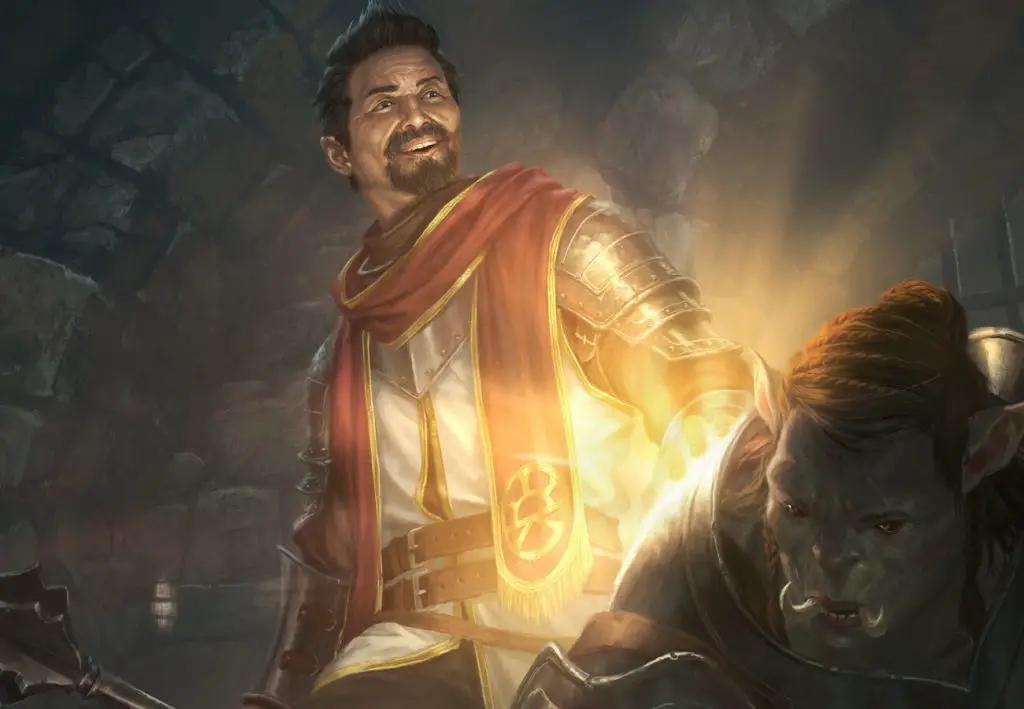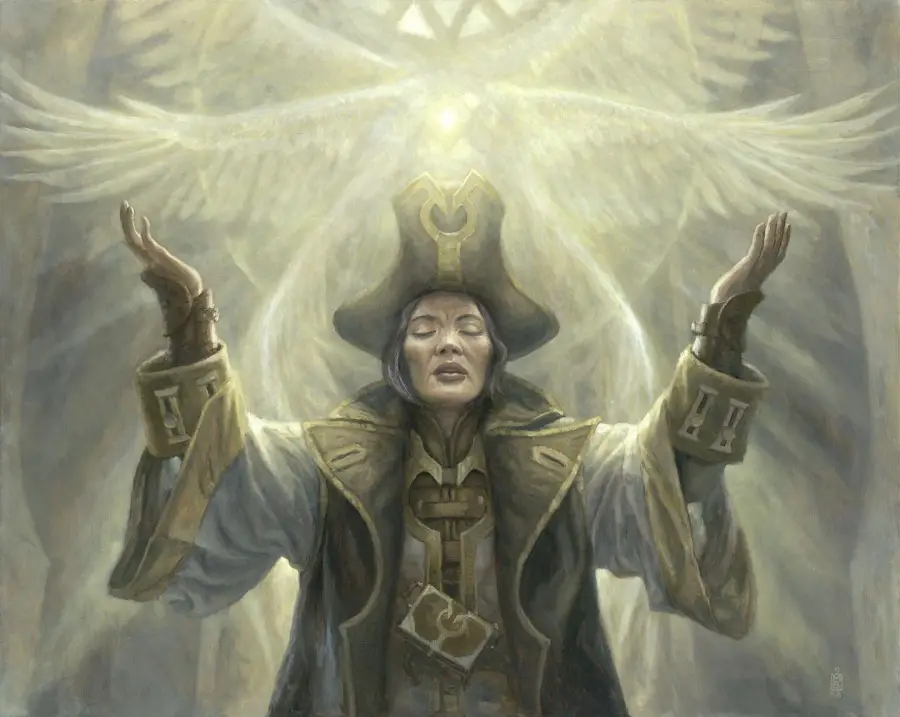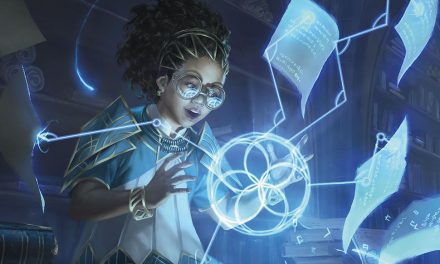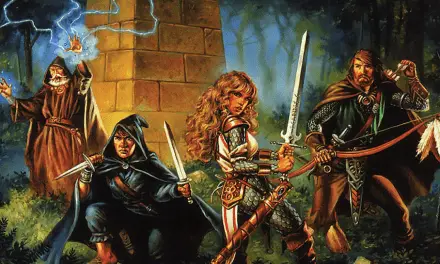If there was ever a symbol of Divine Power, what could be greater than the Sun?
Light allows life to grow and chases off threats that loom in the shadows. It heals and nourishes but can also be infinitely destructive.
If cleansing the battlefield in holy fire sounds like fun, then you’re in luck!
This is the full subclass guide to the Light Cleric in D&D 5e!
What is the Light Cleric in D&D 5e?
The light, the Sun, fire… These can all mean and represent different things to different people. Symbols of these have long been present throughout history and across every culture.
To some, these symbols represent ideas of rebirth, truth, and beauty. To others, they represent vigilance, beauty, and inspiration.
Whatever the case, there is a mystical and divine power to light that cannot be denied.
Harnessing the powers of light and fire, the Light Cleric worships and reveres deities who represent these ideals.
Deities commonly worshipped by Light Clerics include:
- Lathander, God of Dawn, Renewal, Creativity, and Birth
- Helm, God of Vigilance, Guardians, and Protection
- Pholtus, God of Light, Order, the Sun and Moon
- Belenus, Druidic God of Sun and Fire
- Branchala, the Silver Flame, God of Inspiration
The Light Cleric appears in the 5e Player’s Handbook.
Role in the Party
Just like the light can heal and nourish, it can also be capable of untold destruction. Harnessing this power with the help of your deity, the choice is yours!
Like any Cleric, you’ve got plenty of ways to heal your party and keep them in fighting shape.
Where the Light Cleric mixes it up is their selection of powerful spells that are meant to reduce enemies to fine ash in the wind. This is a Divine Domain geared heavily towards being a divine blaster for your party.
But you’re tougher than the Wizards and Sorcerers who usually fill this role!
Planted firmly in the middle of the party’s formation, you’ve got the best seat in the house to blast enemies and heal/protect your allies!
Adding in some light-based utility and a feature that’s great for derailing enemy attacks just makes these Clerics even more impressive.

Light Cleric Features 5e
The Light Cleric gets several truly impressive features. They start out strong and only get better as they level up.
Most of the spell list is truly exceptional, especially when paired with the already-great Cleric spell list. Meanwhile, features like Warding Flare can save you and your allies’ necks in combat!
I can’t wait to talk about this subclass’s features, so let’s dive right in!
Also Check Out: Using Turn and Destroy Undead in D&D 5e!
Light Domain Spells
Every Divine Domain (Cleric subclass) also comes with its own unique list of bonus spells. These are called Domain Spells.
You gain these Domain Spells when you hit the level on the table below. These spells are considered to always be prepared for you and they don’t count against the number of spells you can prepare each day.
Some Domain Spell lists might include spells that aren’t normally on the Cleric spell list. In these cases, the spell counts as a Cleric spell for you and uses your Wisdom modifier as the spellcasting ability.
So, let’s check out what you get for choosing the Light Domain!
| Cleric Level | Domain Spells |
| 1 | Burning Hands, Faerie Fire |
| 3 | Flaming Sphere, Scorching Ray |
| 5 | Daylight, Fireball |
| 7 | Guardian of Faith, Wall of Fire |
| 9 | Flame Strike, Scrying |
That’s… a lot of blasting…
Feel free to laugh as you rain divine and fiery judgment down upon your enemies. If anyone asks, just say it’s part of casting the spell.
Thoughts on the Light Cleric Spell List
At the lower levels, Burning Hands is massively impactful. You will eventually outgrow it around level 5, but you’ll have no shortage of other fiery spells to unleash.
Faerie Fire will serve you well for your entire adventuring career. It’s great for dealing with invisible enemies while also giving your melee allies advantage on their attacks!
Normally I think Flaming Sphere is a solid option, but situations where you’ll want it instead of Spiritual Weapon are rare.
Scorching Ray, on the other hand, is a staple blasting spell. You’ll be getting a lot of use out of this one!
I don’t think I need to explain why Fireball is great. It’s THE essential blaster spell!
You’ll have some situations where Daylight will come in handy. I can forgive how situational that one is because it fits the theme and you’ve also got Fireball!
Wall of Fire is excellent for both damage and exercising a huge amount of control over the battlefield. What’s not to love?
I’ve never “got” Guardian of Faith. It’s a lot of work for an unimpressive amount of damage. It’s a weird inclusion here, but I can excuse it because it’s paired with such a fantastic spell.
Things admittedly burn out a bit with your level 9 spells though…
Flame Strike suffers from the incurable condition of “not being Fireball.” It’s a small radius that does the same amount of damage as Fireball at level 3 but splits the damage types.
Pick up the Elemental Adept feat, tell your friends to watch their heads, and upcast your fireball. You’ll be better for it (and your enemies certainly will not).
You gain some divination utility with the inclusion of Scrying on this spell list. You probably won’t use this often, but it’s nice to have I guess?

Bonus Cantrip (Level 1)
The extra cantrip you gain at level 1 is a no-brainer.
You gain the Light cantrip if you don’t already know it.
I mean, it would be weird if a Light Cleric didn’t have this, right?
Realistically, most of your party probably has darkvision. However, this is still one of those spells that somebody in every adventuring party should always have.
As it turns out, that somebody is you.
Warding Flare (Level 1)
It’s the sad fate of some lower-level adventurers to end their journey on the business end of an ogre’s club.
Thankfully you’ve got a trick up your sleeve!
Much like taking a picture but forgetting that the flash was on, your attacker will be seeing stars!
When you are attacked by a creature within 30 feet of you that you can see, you can use your reaction to impose disadvantage on the attack roll, causing light to flare before the attacker before it hits or misses. An attacker that cannot be blinded is immune to this feature.
You can use this feature a number of times equal to your Wisdom modifier (a minimum of once).
You regain all expended uses of this feature when you finish a long rest.
This is used after the creature has rolled to attack you but before the DM says whether it hits or misses. That stack is very important, so make sure that your DM gives you a quick moment to announce if you’re using this.
Imposing disadvantage on an enemy’s attack roll for the low cost of a reaction is an excellent trade. You won’t be taking any attacks of opportunity, but you’ll have your hit points intact and your head still on your shoulders!
Just be aware that this works on A SINGLE ATTACK ROLL.
If an enemy has the multiattack feature, you need to decide which of those attacks to use your Warding Flare on. So, use it wisely!
This is best used against enemies that hit harder but less often.
If you see an enemy ogre about to charge you, it’s generally a better idea to use this against them instead of an enemy making multiple weaker attacks.
Note that it can also be used against spell attacks!
Channel Divinity: Radiance of the Dawn (Level 2)
Magical Darkness is different than regular darkness. While it tends to be somewhat rare, it can be incredibly problematic since darkvision is useless in those cases.
Thankfully, lighting the darkness is a huge part of what Light Clerics are all about!
As an action, you present your holy symbol, and any magical darkness within 30 feet of you is dispelled.
Additionally, each hostile creature within 30 feet of you must make a Constitution saving throw. A creature takes radiant damage equal to 2d10 + your Cleric level on a failed saving throw, and half as much damage on a successful one.
A creature that has total cover from you is not affected.
This feature is most useful at the earlier levels. Not only is it a dependable light source, but the damage counts for much more in the low levels. It’s not bad at higher levels, but it won’t be an ideal use of your action in most cases.
Of course, this is best if you and your party find yourselves getting swarmed.
Creatures that like to swarm tend to be weaker. That means the odds are pretty good they won’t fare well against this.
With a single action, you could melt an entire horde of enemies that have you surrounded!

Improved Flare (Level 6)
Warding Flare is an important feature for the Light Cleric. At level 6, it gets even better by letting you protect your allies!
You can use your Warding Flare feature when a creature that you can see within 30 feet of you attacks a creature other than you.
Generally, you’ll want to be hanging around the middle of the party. Keeping an ally within 30 feet of you shouldn’t be a problem in most circumstances.
Though this is actually based on the creature’s location. So if your ally is 50 feet away but about to get hit by an enemy’s ranged attack, you can still use this if that enemy is within 30 feet of you.
Especially when it comes to protecting members of your party who are squishier or running low on HP, this is fantastic.
Sometimes you just need an ally to hold on for a little while longer before you can heal them. This can buy you that time!
Potent Spellcasting (Level 8)
At level 8, your Cleric cantrips get an extra buff!
You add your Wisdom modifier to the damage you deal with any Cleric cantrip.
As a blaster, any buff to your spells’ damage output is greatly welcomed.
Considering that you should have a Wisdom score of 20 by this point, that’s an extra 5 damage to your cantrips’ damage. At the very least you hopefully have a Wisdom score of 18 for a +4 bonus to your cantrips’ damage.
The Cleric’s “bread and butter” damage cantrips are Sacred Flame and Toll the Dead. So, pick those up if you haven’t already, and don’t forget the extra damage!
Just be aware that this bonus only applies to your Cleric cantrips. If you’ve gained cantrips from multiclassing or a feat like Magic Initiate, this benefit won’t apply.
Corona of Light (Level 17)
I’m more of a wine guy, but this Corona of Light really hits the spot!
Ok, ok, so I’m probably only the millionth person to make a beer joke. However, unlike my joke, this feature is excellent!
You can use your action to activate an aura of sunlight that lasts for one minute or until you dismiss it using another action.
You emit bright light in a 60-foot radius and dim light 30 feet beyond that.
Enemies in the bright light have disadvantage on saving throws against any spell that deals fire or radiant damage.
Activating this feature lets you shine bright and turn up the heat. Literally!
Between the Light Cleric’s Domain spells and the Cleric spell list, nearly every spell you’re casting will benefit from this.
60 feet is huge and will cover most combat encounters. If it’s not enough, you can just move closer to the enemies since the light is emitting from you.
Having disadvantage on saves against spells like Fireball or the Cleric-favorite Spirit Guardians (which deals radiant damage) can spell disaster for your enemies.
There is a slight opportunity cost here since it takes an action to activate this. That means you’re spending that action activating this instead of throwing a fireball or some other spell.
However, the benefits far outweigh the cost in most situations where you’ll want this active.
As far as capstones go, I love this one. It takes everything that makes the Light Cleric great and makes it even better!

Connections
Sticking with the themes of the Light Domain, you shouldn’t have much difficulty connecting a Light Cleric into the adventure.
Wherever there is evil lurking in the darkness, Light Clerics are prepared to stand against it. Trusting in their deities to light their way, there is no darkness too terrifying to brave.
Because they are committed to standing against darkness wherever it might be, they make for great heroic characters.
They’ll also fit in seamlessly with a party of “good” characters.
With some finesse, you could make them fit into a party that’s a bit more on the “morally gray” side of things. However, the ideals that Light Clerics hold in highest regard tend to be most closely aligned with a Lawful Good alignment.
If they are sticking with a party that might not be quite as on the “up and up” as them, they might come off as a bit rigid. However, that could also be incredibly fun to roleplay as a part of the group’s dynamic!
Is the Light Cleric Good?
Light Clerics are an incredible subclass to consider if you are split between wanting to support your party and blast enemies to kingdom come.
They do somewhat step on the toes of more “traditional” blasters like Wizards and Sorcerers, but it’s not enough to be a problem.
Besides, every party can always use more fireballs, right? Just be sure to make some room to pick up the Elemental Adept feat since you rely heavily on fire damage and there are tons of enemies that resist it.
Either way, the Light Cleric is everything you could want in a “blaster” type Cleric.
Comparisons between the Light Cleric and the Divine Soul Sorcerer are going to be inevitable, though. So, I do want to briefly address that.
The two subclasses have a lot in common, but there’s a slight nuance between them to consider if you’re having trouble choosing.
The Light Domain builds on the power of the Cleric spell list and ups its blasting potential. Speaking generally, you get a healer/supporter who can also blast their way through combat encounters.
Meanwhile, the Divine Soul Sorcerer adds healing/support options from the Cleric class to the Sorcerer’s blasting potential. Generally speaking, you’ve got a blaster who can also offer ample healing and support.
It’s a small nuance, but it is one that’s worth noting.
Speaking personally, I’m more of a fan of the Light Cleric for their ability to swap spells out at the beginning of each day and overall toughness.
I’d be curious to read your thoughts in the comments below!
Want More? Check out my ranking of every Cleric subclass in D&D 5e!
Conclusion – Light Cleric in D&D 5e
But that wraps it up for this guide to the Light Cleric in D&D 5e.
One of the things that I love most about the Light Cleric is that it really adds to the idea that Clerics can fit many roles.
I’m the last to roll my eyes at the healing and support offered by the Life Domain and Twilight Domain options, but the Light Cleric shows that being a blaster isn’t exclusive to arcane casters.
But what are your thoughts on the Light Domain Cleric? Let’s chat in the comments!
Want all the latest player guides, DM tips, news, reviews, and more for D&D 5e? Sign up for the Tabletop Joab newsletter below!
You can also follow me on Facebook and Twitter.
If you found this article helpful and want to support the site, you can buy me a coffee here! (It’s not expected, but very appreciated!)









